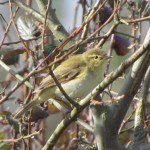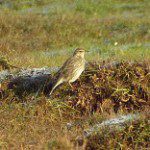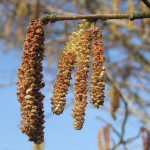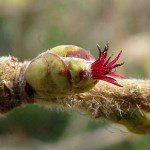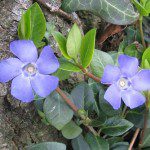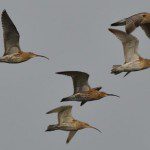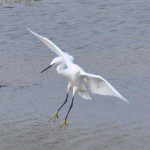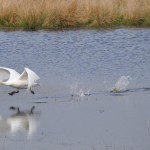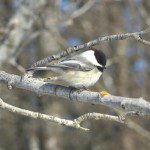Axe Estuary Birds No 152 March 15th 2011
NB: The following is reproduced by kind permission of Axe Estuary Birds. Full credit goes to the team that produces the newsletter (see the bottom of the post for specific details). Photographs are credited throughout the text although we are working to preserve the original layout wherever possible in the future.
The Birds
Spring is with us at last! Steve Waite was up near Beer Head on March 8th, and saw his first four Wheatear of the season, one of which obligingly posed for him. Not only his first, but the earliest he has ever seen them.
Sue Smith..”What a difference a day makes! BHM this morning – absolutely wonderful – Spring is on its way. 6/7 Sand Martins, a pair of Stonechats and Chiffchaffs everywhere. Wonderfully warm too. Hope that is not it for a few weeks.”
Bob Olliver writes “The new car park and access to Black Hole Marsh, etc. is proving popular already, very busy this afternoon! I was surprised to find that there was only one page of records for the whole week (5 observers, 23 records, 16 species!) but the Bewick’s and Greylag continue to show well at times and were present on the 4th when there were 33 Mute Swans in the usual Stedcombe flock. A drake Pintail was present on the small scrape on the 6th and 64 Teal were counted on and around the scrapes . The highest Wigeon count was 40+ on the 2nd and 38 on the 66th. 2 Water Pipits and 10 ‘Scandinavian’ Rock Pipits were seen on the reserve on the 4th.”
Ian McLean writes “ The over-wintering Pipits at Colyford Common have been very elusive of late so I was quite pleased this morning when two of the ‘Scandinavian’ Rock Pipits were close enough to attempt to digiscope.
At Seaton Marshes, the first Wheatear was also reported, the Water Rail was showing well, as well as 50 Curlew, 40 Lesser Black-backed Gull and 30 Wigeon
Ringing
Just a note of today’s (5th)catch that totalled 83 birds. 27 Shelduck, 8 Wigeon, 2 Canada Geese and 46 Black-tailed Godwits. The latter species caught me out, as there were more present than I thought and with a good number of duck escaping from the flying net, rather messed up our expected number of duck. Anyway it gave the trainees a field day.
News from Holyford Woods
Having been away for ten days I entered Holyford with anticipation. Immediately I was greeted by the sunny faces of a few Primroses and Lesser Celandines peeping up from the leaf litter. The mound of waste in front of a badger sett is covered with the dainty Wood-Sorrel in flower, and Wood Anemone leaves are showing there. Flowers of the bright green Moschatel (the ‘town hall clock’) are about to open, and Dog’s Mercury is rapidly filling the spaces between the Bluebells which are at a standstill, likewise the Ramsons. The Hazel Catkins are dulling having shed their pollen, and now the Pussy Willows are opening and filling out. Everywhere there are birds calling but as yet no Chiffchaff. A Buzzard glided low over the lonely Raven perched in his tree, but he was too lazy to chase after it, and merely croaked furiously and flapped his wings. There were two Brimstone butterflies and a Peacock. The dry spell has drastically reduced the water in the frog pool, and no spawn is showing. Has it hatched or disappeared in to the mud? Also there is none along the North edge of Top Pool. As I was searching, we disturbed the 3 Mallard ducks and the drake’s quacking excited Paco who took a flying leap onto the dead parrot feather weed, thinking it was firm, and went right under! The ducks flew off as he surfaced, shocked, spluttering, and draped in weed. He did not smell very sweet and neither did I after he shook himself all over me.
Jean Kreiseler
The Trivia
Karen Woolley walked along the Coly a few days ago, and spring was much in evidence.
And Sue Smith took some “mundane” shots (I would love to see those she considers special!)
You probably know that the new Wetlands Car Park is now open, giving easy access to Black Hole Marsh and Colyford Common. Drive into Seaton Cemetery and go through to the field the estuary side, and then walk down the much improved path. Take care coming out, as the entrance is on a bend.
Garden Bird Watch
Black-capped Chickadee, Winnnipeg, Canada
Your Garden Bird watch sheets are still coming in, and although not all that many are very interesting. Hopefully the results will be ready by April. This picture of a Black-capped Chickadee was sent from a snow covered Winnipeg by Richard Staniforth, with a list of ‘Backyard Birds’ which was different, as you will see when the analysis is complete.
Birds for Beginners
For the new season’s Birds for Beginners sessions, it is planned to have a “Guide in the Hide” every Friday from 10.00 am. At the moment the sessions will start at either The Island Hide or Colyford Common Hide, and a notice will be posted to indicate which one. Then from 12.30pm the guide will move to Seaton Marshes Hide.
This twice-monthly email newsletter is freely available to anyone who would like it, as is a periodic one about the activities of the East Devon Local Group of the Devon Wildlife Trust. Just send me an email with Axe Estuary Birds and/or East Devon DWT in the subject line. Also, for those without a computer, I will send a copy by post if you would like to send me some stamps.
Thanks to those who keep me informed. Please continue to tell me of any unusual, interesting or amusing sightings, and what is about locally, and send any photos you would like to share.
Mike, Jean, and David. (and many others!) davidwalters@eclipse.co.uk. tel. 01297 552616 Mobile 0779 1541 744.



